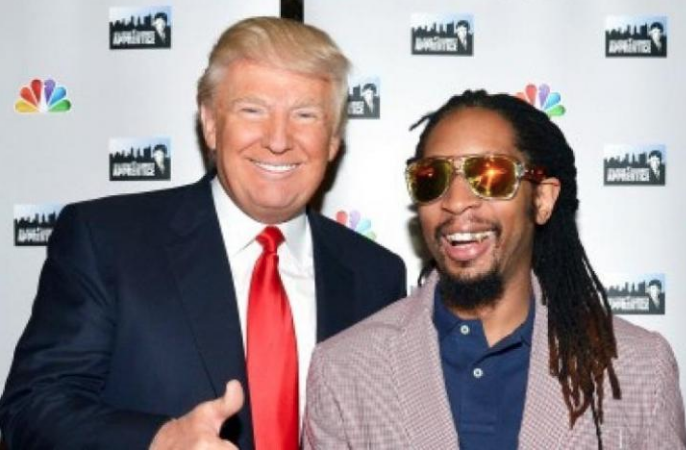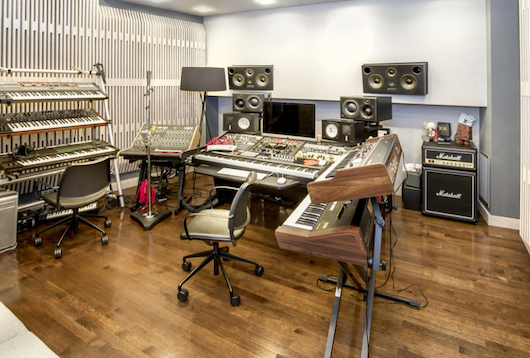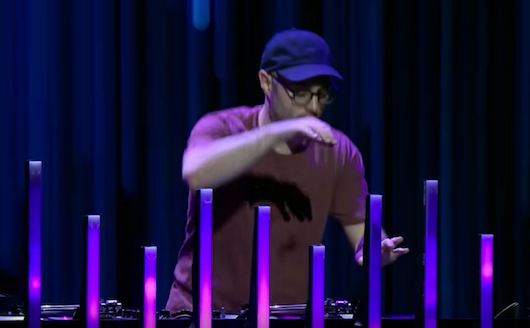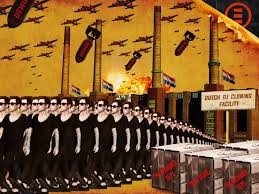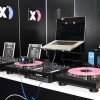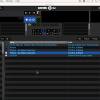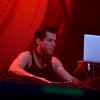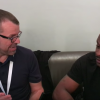Young Guru Is the Most Influential Man in Hip-Hop You’ve Never Heard Of via Wall Street Journal
ON A COOL, RAINY afternoon in Austin, Texas, Young Guru—Jay-Z’s personal sound engineer for the past 16 years—was giving a master class on recording and mixing techniques at Dub Academy, a music school and studio east of downtown. Lanky and lithe, the former high school basketball star radiated a quiet authority at the front of the room, befitting his nickname. While his disquisition ranged from best practices for setting sound levels to navigating life on the road, the audience—which included everyone from gee-whiz interns to producer Mannie Fresh, who mentored Lil Wayne—hung on his every word.
That’s because Young Guru, 41, is the most famous and successful engineer in the history of hip-hop, the man in charge of soundboard operations for many of his generation’s legendary recordings. He was on the ground floor of both Sean Combs’s Bad Boy Records and Jay-Z’s Roc-A-Fella Records. He recorded Eminem and 50 Cent early in their careers. You name them, he’s been in the studio with them: Beyoncé, Drake, Rick Ross, Rihanna, Snoop Dogg. “He asks producer questions, which lead us to talking about engineering,” says Ernest Dion Wilson, aka No I.D., who produces for Kanye West and Jay-Z and is known as the godfather of Chicago hip-hop. “I ask him engineering questions, and we end up talking about production. There are not too many people with whom I trust that conversation.” It’s a sentiment echoed by the dozens of artists he’s worked with. “He invigorates me,” says the rapper Common, who was nominated for a Grammy this year for his album Nobody’s Smiling, which Young Guru mixed. “When I get around him, I feel like we can accomplish things, because he has that type of energy.”
Young Guru is not just a sought-after authority in the music industry—in recent years he’s become equally in demand in Silicon Valley, where his innate grasp of the relationship between engineering and art is a valuable commodity. He’s an artist-in-residence at USC, where he teaches students about music technology and music history, and is a frequent guest speaker at colleges (NYU and MIT among them), tech conferences and companies such as BitTorrent and Pandora. In 2013, he partnered with Hewlett-Packard and the Recording Academy’s Grammy U program to create an educational tour called “Era of the Engineer.” At 13 cities across the country, he spoke to students about what audio engineers do, explaining the influence and innovations of famous practitioners like Tom Dowd, who pioneered multitrack recording, and Tony Maserati, who helped invent the sound of New York hip-hop and R&B.
While artists and producers tend to think about the creation of a song on a macro level, engineers operate on a micro scale, using precise metrics to smooth out or blow up any sonic detail within the overall sweep of a song, much as a baker deploys exact pinches of spices and ingredients to achieve a desired taste. Using preamps, compressors, faders and, of course, a highly discriminating set of ears, an expert sound engineer like Young Guru layers the various elements of a track, an alchemical process that can utterly transform the music’s atmosphere.
“That’s the gangsta thing about the computer,” says Young Guru. “When computerized music appeared, other engineers were thinking that it didn’t sound right. And it didn’t at first. It sounded clunky and janky. But I thought it was incredible. Before it, you needed four guys on the mix. Now you can just write it.”
With a client—like Jay-Z—whom Young Guru has worked with so long, he can almost anticipate what the artist wants. When Jay-Z thought the track “Run This Town” didn’t sound “army” enough, Young Guru found a stomp-like sound and layered it under the kick drum to create the effect of a troop marching down the street. Other times his touch is lighter: On “Empire State of Mind,” Young Guru applied his knowledge of grunge bands like Nirvana—which tend to have a wide dynamic range—to descend into the scaled-down beginning of the song’s second verse without losing the energy of the first.
“He’s expanded the idea of what an engineer can be,” says Patrick Gillespie, an administrator at Cornell University, where Young Guru judges an annual design competition sponsored by Intel. “Engineers are no longer sitting in the back room. They’re out front, creating things, showing the world what can be done.”
Young Guru was born Gimel Keaton in Wilmington, Delaware, in 1974, the middle-class son of a schoolteacher mother and an accountant father. He recalls traveling to Philadelphia as a child to get cassette copies of early hip-hop recordings that had come down from New York. By age 12, he was DJ’ing midnight basketball games in the Wilmington projects, while studying his DJ idols Jazzy Jeff and Kid Capri by day.
Enrolling at Howard University, he became one of Washington, D.C.’s leading club DJs. The school put on an annual hip-hop conference, the first of its kind, which gave Guru access to stars like Tupac Shakur and the Notorious B.I.G. By his senior year, he’d DJ’d at the shows of all the big hip-hop artists who’d come to town.
After a tour in Europe, Young Guru studied sound engineering at a studio in Maryland in order to learn how to record jazz and rock records in addition to hip-hop, which he was already working on with two of Bad Boy Records’ biggest producers. Two years later, he was in Manhattan, working on a record with Memphis Bleek, a Jay-Z protégé. “Jay-Z came in to supervise. He saw me and said, ‘I like the way you work.’ ”
Sixteen years later, he’s still Jay-Z’s personal sound engineer and a close confidante, to the point that the hip-hop juggernaut entrusted Young Guru with holding his entire musical oeuvre on the sound engineer’s hard drives at home. “Whenever he needs me, I’m a phone call away,” Young Guru says. “That’s how it rolls. I drop everything for him.” The relationship has its perks—Young Guru has served as Jay-Z’s tour DJ since 2010.
An avid reader, he devoured books and articles about design, tech culture and his favorite subject, physics (he even once attended a scientific conference to learn about the God particle). “I want to know how the universe works, the same way an engineer’s mind looks at a piece of equipment,” he says. “I want to take it apart.”
When opportunities beyond music began to arise, Young Guru was ready. He was an easy talker and a natural teacher, having acquired his nickname in high school while giving African history classes at a community center. In 2013, as a visiting lecturer at USC’s Thornton School of Music, he made such an impression that the school named him an artist-in-residence and enlisted him to help design the curriculum for a new music-production major.
“He’s made a huge impact across our school,” says Chris Sampson, vice dean of contemporary music at Thornton. “He’s been featured in our music history classes, our songwriting classes, our production classes and general education, because he has that depth of knowledge and flexibility. He went from being a guest speaker to a vital colleague.”
Young Guru realizes he occupies a unique cultural niche, that of the smoothest guy in the room who also happens to be a science whiz and a massive Star Trek nerd. Like his hero Spider-Man, he knows that with power comes responsibility—in his case, to help change the perception of engineering. “To my younger community, engineers weren’t cool,” he says. “But I was always the guy who didn’t care what other people thought.”
He’ll soon be at the Kennedy Space Center to judge the Intel-Cornell Cup, supervising innovation labs at MIT and consulting Warner Bros. Pictures on franchise science-fiction projects. But music remains a major focus: For RCA Records, he recently finished mixes for a debut from the hip-hop collective A$AP Mob. It’s all part of the guru’s wide-ranging curriculum, a never-ending process of education.
“He truly is a scientist, a musician, a visionary,” says Common. “Sometimes technology doesn’t get to the core energy of a project, but he knows how to manipulate it where you feel like you’re getting something authentic and organic. He uses technology at its highest level.”



